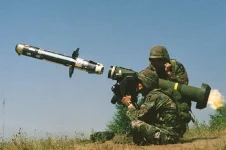- Views: 2K
- Replies: 42

India's exploration into the joint production of the American Javelin anti-tank guided missile (ATGM) is currently under evaluation, sparked by the Indian Army's pressing need for a rapidly deployable, man-portable anti-tank weapon. This development occurs while India continues to diligently advance its indigenously developed Man-Portable Anti-Tank Guided Missile (MPATGM) program.
One of the Javelin's most compelling features is its weight. At a total of 22.3 kg (including missile, launcher, and sights), it significantly undercuts the weight of India's MPATGM. The latter, while still in development, is estimated to weigh around 29 kg, excluding its tripod. This makes it a heavier system requiring a two-person operation, unlike the shoulder-fired Javelin.
Notwithstanding the Javelin's advantages, India is strategically adopting a two-pronged approach. The Javelin's quick availability and lighter weight position it as an ideal choice for rapid deployment, especially considering current border tensions. Concurrently, India remains committed to the development and eventual procurement of the MPATGM, which may fulfill distinct roles within the army's arsenal in the long run.
The MPATGM has been undergoing trials since 2018, but its development and user trials are anticipated to take another 2-3 years. In contrast, the Javelin is a combat-proven system with a track record in various conflicts.
Reports suggest that India is contemplating a substantial order of nearly 40,000 Javelin and MPATGM 3rd generation ATGMs in the future. This move aims to phase out the current inventory of 70,000 2nd generation ATGMs (Milan of French origin and Russian Konkurs ATGMs), which are considered outdated against modern armor. Both the Javelin and MPATGM are likely to replace these older systems within the Indian Army.



